Does your car constantly feel like it’s pulling to one side even though you’re just trying to drive straight ahead? If it does, then you’ll have to put all of your road trip plans on hold until you can figure out what’s causing it.
Note: While “swerving” technically refers to what a driver does to take evasive action while driving, in this article, we’ll use it to describe a vehicle that pulls to one side, which is what happens when there’s something wrong with it.
What Causes a Car To Swerve or Pull to One Side?
Figuring out exactly what’s causing your car’s steering to pull can be tricky, but here are some possibilities. In this context, a steering pull would be when the car wants to go to the right or left and you have to keep steering against the pull to keep the vehicle going straight. Another concern would be if the car suddenly “darts” to one side or another.
One outside factor that can cause this kind of thing would be a strong, steady crosswind.
Another cause of steering pull would be a road with excessive “road crown,” where the road is paved so that the center is a lot higher than the shoulder, which causes the vehicle to “fall away” from the road crown simply because of gravity.

These issues don’t represent a problem with the vehicle. But when there is a problem with the vehicle itself, meaning, the pull is always there regardless of outside factors, here are a few possible causes to consider.
Uneven Tire Pressure or Tire Wear
Uneven tire pressure is one of the biggest culprits behind steering pull but it’s also the easiest one to solve. One of your tires might not have enough air, causing your car to favor one side over the other when you’re driving.
Note, however, that there are some tires that look good and have the right air pressure but just don’t want to roll freely. A tire can cause a pull even if it’s the same size as all the other tires, looks good, and is fully inflated. To find out, rotate the tires from side to side (first the front ones, then the rear) and drive the car to see if it pulls the opposite direction.
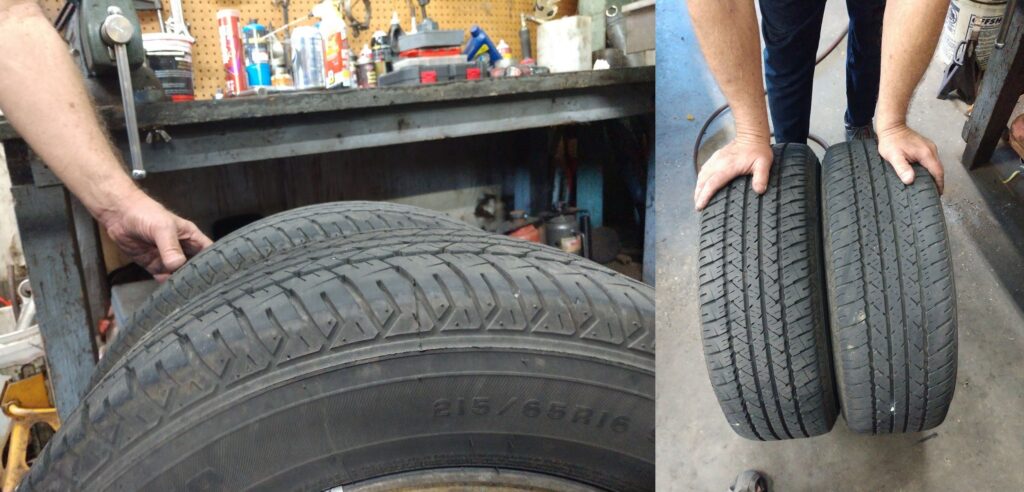
You also need to check the pressure in all four tires with a reliable gauge and compare it to the tire information label, which is usually on the B pillar and is visible when you open the driver’s door. Remember not to go by the pressure listed on the tires because this is the maximum for the tire, not the recommended pressure for the vehicle. Second, make sure the tires that are on the vehicle are all the same size. If they’re not, you’ll need to fix this before going any further.
Remember not to go by the pressure listed on the tires because this is the maximum for the tire, not the recommended pressure for the vehicle.
– Richard McCuistian, ASE Certified Master Automobile Technician
Poor Wheel Alignment
Even if uneven tire pressure or wear has been eliminated as the cause, poor wheel alignment can also cause your car to pull to one side. Wheel alignment angles are referred to as caster, camber, and toe, with toe and camber being most likely alignment angles to cause a steering pull.
If the rear axle is crooked under the vehicle it can cause the thrust angle to be off, which will seem like a pull because the steering wheel will be badly off-center and the vehicle will travel down the road “dog tracking.”
Your car’s wheels should all point in the same direction at all times. Even if just one wheel slips out of alignment, your entire car will swerve to one side, and you’ll have a hard time steering your vehicle until you get your tires fixed.
To check if poor wheel alignment is the issue, inspect the wear patterns on your tires. If one tire seems more worn out than the others, then your wheels might not be aligned properly.

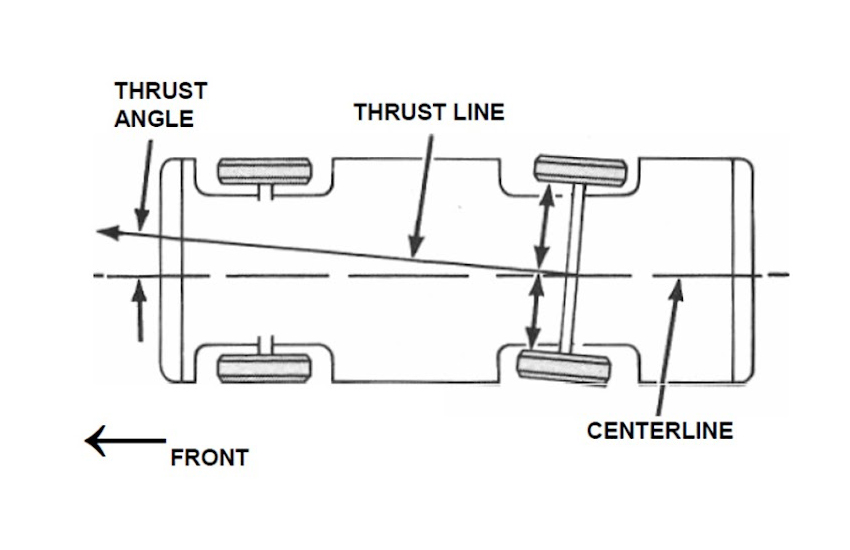
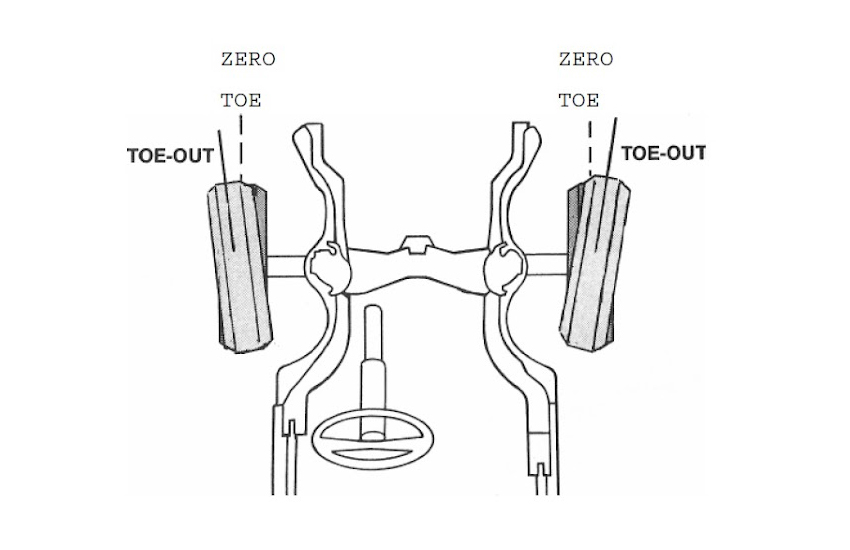
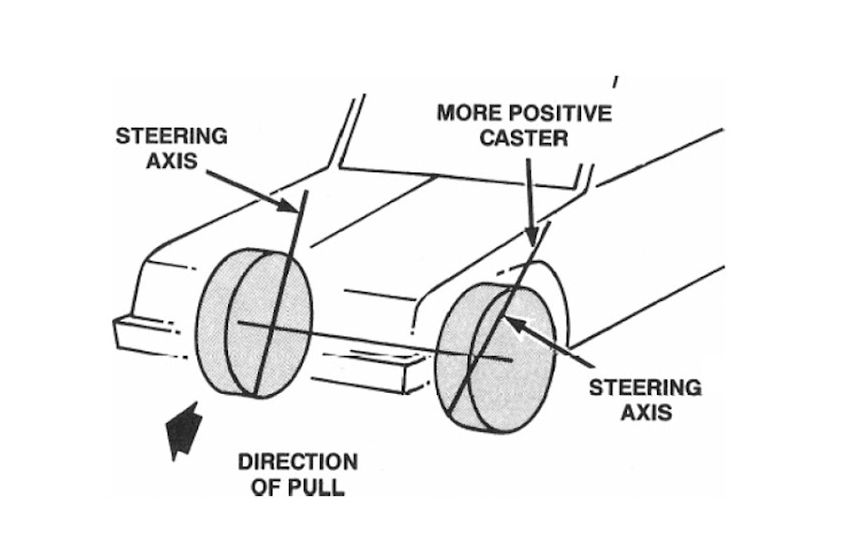
Worn Control Arm Bushings
In some cases, the issue with your suspension might not be the ball joints, but the bushings attached to them. Badly worn control arm bushings can cause your car to pull or dart to the side as your front wheels slip out of alignment.

Bad Steering Rack Bushing
Similar to control arm bushings, a steering rack bushing can also cause your wheels to slip out of alignment. A steering rack bushing, also known as a rack and pinion bushing, eases the vibrations from the suspension to the steering system. These bushings, if they fail, can allow the steering rack to move laterally, causing steering pull and darting.
A worn or loose steering rack bushing can also cause your steering wheel to feel inconsistent and clunky. It can cause poor wheel alignment and send your car swerving off the road.
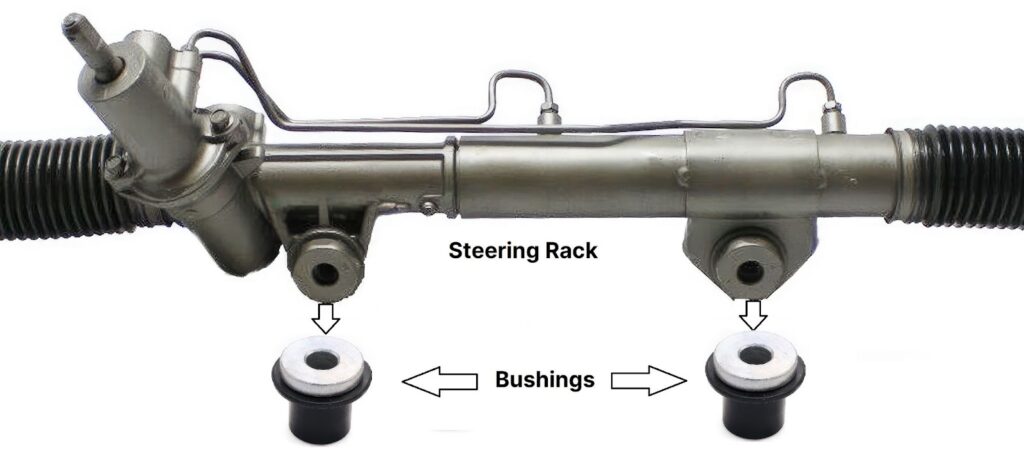
Other Suspension Issues
Your car constantly relies on your suspension for a smooth and comfortable ride. If any part of your front or rear suspension is worn or damaged, your entire suspension system becomes compromised. You’ll most likely lose control of your car as it pulls to one side while you’re driving.
Brake System Issues
Does your car pull to one side whenever you hit the brakes? If the answer’s yes, then you might have finally found your culprit. A stuck caliper or worn brake pads can cause your car to swerve every time you hit the brakes or release the pedal.
Can Loose Ball Joints Cause a Vehicle to Pull to One Side?
If your car’s suspension is suffering from loose or worn ball joints, then your car won’t likely pull to one side but might make noises while you turn or go over bumps. If the boots on the ball joints haven’t burst and the ball joints don’t have detectable play from wear, the ball joints are regarded as okay. Note that special procedures are needed to determine ball joint wear. If the ball joints have busted boots and the grease is gone, they can become very tight and cause the steering to feel strange.
Is It Safe To Drive a Pulling or Swerving Car?
Some drivers might think, “Well, my car only swerves left and right sometimes, so it’s probably not a big deal,” but they couldn’t be more wrong. A swerving car is a big red flag you shouldn’t ignore, especially because it’s typically a sign that there’s something wrong with your vehicle.

A vehicle with a damaged suspension system isn’t safe to drive, especially on high-traffic roads where it can swerve into other cars. You won’t fare any better driving a car with a seized brake caliper or poor wheel alignment.
How To Prevent Your Car From Swerving
Dealing with a swerving car isn’t easy, but you can save yourself a lot of trouble by planning ahead. If you can, try following these prevention tips:
- Check on your tire pressure and make sure your wheels are properly aligned at least once a month.
- As much as possible, avoid driving on rough roads to minimize suspension damage. If it’s the only route you can take, try driving slowly and carefully over any bumps or potholes.
- Have a trusted mechanic inspect your suspension regularly for any worn or loose parts.
Save yourself from expensive repairs while keeping yourself safe on the road by following these simple tips.
Any information provided on this Website is for informational purposes only and is not intended to replace consultation with a professional mechanic. The accuracy and timeliness of the information may change from the time of publication.




























